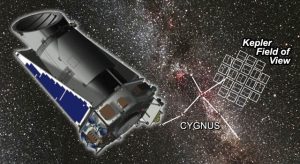Where would modern astronomy be without scientists like Galileo Galilei, Nicolaus Copernicus or Johannes Kepler? We probably would not be scanning the stars of the Milky Way for exoplanets only 450 years later. We owe a lot to these scientists for their ingenuity.

We have moved on from the days of handheld telescopes in the 1600’s to ones that now orbit the Earth and our Sun. More specifically, I am referring to the Kepler Space Telescope which has been operated by the National Aeronautical & Space Administration since its launch in March 2009. In the earliest days of astronomy, scientists exploration of the cosmos was limited by the technology at the time. The first handheld telescope was created by Hans Lippershey in 1608, and it wasn’t until 1990 when the Hubble Space Telescope was launched that we could begin to learn more about our past. Kepler took to the skies 19 years later for a more focused and significant mission (in my humble opinion as a student of astronomy).

Kepler’s job is simple. Launch up from Earth and be placed in a heliocentric orbit where it will scan the same 150,000 stars in the Cygnus constellations. In doing so, NASA is hoping to confirm the existence of exoplanets orbiting stars outside of our solar system. This is fascinating, to think that in just over 400 years we have progressed from a geocentric model of our solar system to accepting that we revolve around the sun and to finally acknowledge the existence of thousands of planets orbiting hundreds of thousands of stars. This is quite literally just the tip of the iceberg to discovering life on other planets.
Kepler uses what is known as the transit method to discover these exoplanets. This means that Kepler stares at the same 150,000 stars looking for a decrease in the amount of light produced by any star, once these dips in light have been recorded by repeating observations, astronomers can confirm the existence of an exoplanet. This video shows what I described.
I believe that the transit photometry method is currently our best opportunity to discovering more exoplanets. We have seen a tremendous increase in confirmed exoplanets since its launch, and Kepler is consistently delivering more confirmed exoplanets to present day. Unfortunately, Kepler encountered technical difficulties in 2014 and its mission was restructured and released as K2, its mission has been altered but it remains in service to this day.
This blog is on the same topic as my individual short presentation I gave last week. As a CMS student focussing on Physics/Astronomy, Math, and Earth & Ocean Sciences these scientific advancements are on the cutting edge of astronomical discovery and I believe it is a subject that deserves our attention. Although we may have thought at one point to be unique in this universe, it is becoming abundantly clear we may have neighbours.
“Two possibilities exist: either we are alone in the Universe or we are not. Both are equally terrifying.” – Arthur C. Clarke
Author: Ryan Berg
